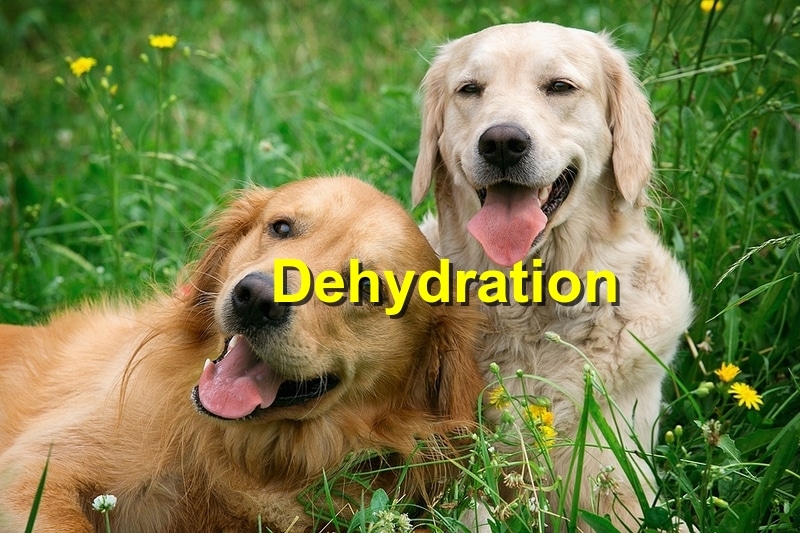Dehydration in Pets: How to Prevent and Treat It

Dehydration is a serious and sometimes life-threatening condition for pets. It occurs when your dog or cat loses more fluids than they take in, and it’s especially common during hot weather, illness, or after vigorous exercise. While dehydration may seem like a minor issue, it can quickly lead to organ damage or even death if not addressed promptly.
In this guide, we’ll explore the causes and symptoms of dehydration in pets, how to prevent it, and what to do if your furry companion shows signs of being dehydrated.
What Is Dehydration in Pets?
Dehydration happens when there is a shortage of water in the body, which disrupts essential bodily functions like digestion, circulation, and temperature regulation. Water is vital for your pet’s health—making up around 60% of an adult animal’s body weight.
Even a 5–10% fluid loss can cause noticeable health problems. In more severe cases, pets may require immediate veterinary care.
Common Causes of Dehydration
Several factors can lead to dehydration in dogs and cats, including:
- Heat and humidity: Summer weather increases fluid loss through panting.
- Illness: Vomiting, diarrhea, or fever can rapidly deplete fluids.
- Lack of water: Inadequate access to clean drinking water.
- Overexertion: Physical activity without breaks or hydration.
- Underlying health conditions: Diabetes, kidney disease, and infections.
Signs and Symptoms of Dehydration in Pets
Recognizing the signs of dehydration early can help you take fast action and avoid more serious complications.
Common signs include:
- Dry nose and gums
- Sunken eyes
- Lethargy or weakness
- Panting or rapid breathing
- Decreased skin elasticity
- Loss of appetite
- Dark yellow or reduced urine output
Skin elasticity test:
Gently pinch a small amount of skin at the back of your pet’s neck or between the shoulder blades. In a hydrated animal, the skin will spring back quickly. If it stays tented or returns slowly, your pet may be dehydrated.
How to Prevent Dehydration in Pets
Prevention is always better than treatment. Fortunately, keeping your pet properly hydrated is simple with the right care and attention.
1. Provide constant access to clean water
Always ensure that your pet has a bowl of fresh, cool water available—indoors and outdoors. Clean the bowl daily and refill it often, especially during hot weather.
2. Monitor water intake
Pay attention to how much your pet is drinking. If you notice a significant decrease in water consumption or if your pet seems excessively thirsty, it may signal a health problem.
3. Avoid excessive heat
Limit outdoor activities during the hottest part of the day. Choose early mornings or evenings for walks, and provide shaded areas for rest.
4. Offer hydrating foods
Wet food contains more moisture than dry kibble and can help increase fluid intake. You can also add water or low-sodium broth to dry food for extra hydration.
5. Keep pets cool indoors
Use fans, air conditioning, or cooling mats to regulate indoor temperatures during warm months. Pets can still overheat inside if the space isn’t properly ventilated.
6. Bring water on outings
Always carry a portable water bottle and bowl when walking, hiking, or traveling with your pet.
What to Do If Your Pet Is Dehydrated
If you suspect your pet is mildly dehydrated:
- Offer small amounts of clean water or an electrolyte solution (pet-safe) every few minutes.
- Move them to a cool, shaded area to rest.
- Avoid excessive exercise or heat exposure for the rest of the day.
If your pet refuses water, continues to vomit, or shows signs of severe dehydration—such as collapse, sunken eyes, or dry gums—seek immediate veterinary care.
Your veterinarian may administer subcutaneous or intravenous fluids to rehydrate your pet safely and monitor for any underlying conditions.
Special Considerations by Pet Type
Dogs:
- Dogs lose water through panting and paws.
- Brachycephalic breeds (like Bulldogs or Pugs) overheat and dehydrate more quickly.
- Active or working dogs may need more frequent hydration.
Cats:
- Cats can be more subtle in showing signs of dehydration.
- They may avoid water bowls, especially if they’re placed near food or litter boxes.
- Consider using a pet water fountain to encourage drinking.
When to Call the Vet
Contact your veterinarian if:
- Your pet has been vomiting or experiencing diarrhea for more than 24 hours
- You suspect severe dehydration
- Your pet stops drinking altogether
- Your pet has a chronic illness like kidney disease
Early intervention is key. Dehydration can quickly escalate into more severe health concerns if left untreated.
Conclusion: Keep Your Pet Hydrated and Healthy
Dehydration in pets is more common—and more dangerous—than many people realize. By staying aware of the signs, keeping water readily available, and adjusting your routine during hot weather or illness, you can keep your pet safe and hydrated.
Simple habits like carrying water on walks, offering wet food, and avoiding peak heat hours can make all the difference. Your pet relies on you to keep them comfortable, especially during the warmer months—so stay alert and proactive, and they’ll stay happy, healthy, and hydrated.
References: Veterinary Emergency Group
Comments
Post a Comment